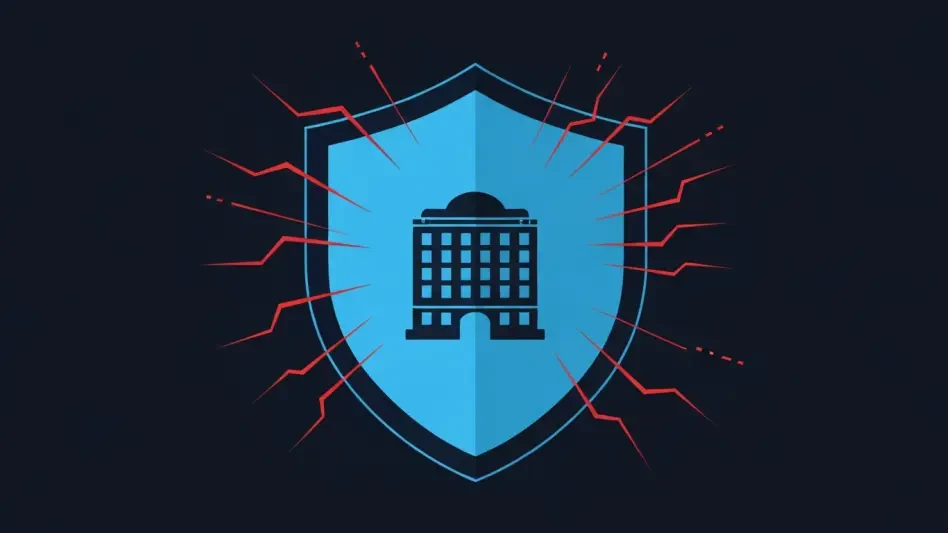In an era where cybercrime casts a long shadow over global security, the dismantling of BlackSuit ransomware emerges as a powerful testament to international determination. This infamous group, which extorted hundreds of millions of dollars from victims worldwide, was targeted in a sophisticated operation known as Operation Checkmate. The scale of BlackSuit’s financial devastation, primarily impacting U.S.-based organizations, underscored the urgent need for a coordinated response. Behind the scenes, law enforcement agencies and cybersecurity experts from multiple nations united to disrupt the group’s operations, seizing critical infrastructure and halting its malicious spread. Yet, as the dust settles, questions linger about the long-term impact of this victory. The adaptability of ransomware groups hints at future challenges that may test even the most robust defenses. This exploration delves into the intricate details of BlackSuit’s downfall, the collaborative efforts that made it possible, and the evolving nature of cyber threats that continue to loom large.
Unmasking the Financial Devastation
The sheer magnitude of BlackSuit ransomware’s impact on global economies is staggering, with extortion demands surpassing $500 million by August 2024. Individual ransoms often ranged from $1 million to $10 million, targeting predominantly U.S.-based entities in critical sectors such as manufacturing, education, healthcare, and construction. German authorities identified 184 victims, a figure that likely represents only a fraction of the total affected. The Cybersecurity and Infrastructure Security Agency (CISA) emphasized the severe disruption caused to these industries, which often lacked the resources to recover swiftly from such attacks. BlackSuit’s strategy of exploiting vulnerabilities in essential systems amplified the chaos, forcing organizations to grapple with operational downtime and reputational damage. The seizure of the group’s data leak site on July 24 marked a pivotal moment, but the financial scars left behind serve as a grim reminder of the high stakes in the battle against cybercrime.
Beyond the monetary toll, BlackSuit’s reign exposed systemic weaknesses in cybersecurity preparedness across multiple sectors. The group’s ability to penetrate and paralyze critical infrastructure highlighted the urgent need for stronger defenses and proactive measures. Many victims faced not only immediate financial losses but also long-term consequences, including eroded trust from clients and stakeholders. The targeting of healthcare and education sectors, in particular, raised ethical concerns, as these attacks disrupted services vital to public welfare. While the dismantling of BlackSuit’s technical infrastructure offered temporary relief, it also underscored the broader challenge of addressing the root causes of such vulnerabilities. Governments and private entities alike must now prioritize investments in robust security frameworks to prevent similar threats from taking hold. The aftermath of BlackSuit’s campaign serves as a wake-up call, urging a reevaluation of how sensitive data and systems are protected in an increasingly digital world.
The Power of International Collaboration
Operation Checkmate stands as a remarkable example of global unity in the fight against cybercrime, bringing together a coalition of formidable forces to dismantle BlackSuit. Law enforcement agencies from the U.S., including the FBI, Homeland Security Investigations (HSI), and the Secret Service, joined hands with Europol and cyber authorities from nations like the UK, Germany, France, Ireland, Ukraine, Lithuania, and Romania. The inclusion of private sector expertise, notably from Romania-based cybersecurity firm Bitdefender, added a critical layer of technical prowess to the effort. This diverse alliance worked tirelessly to seize BlackSuit’s infrastructure, disrupting its ability to extort further victims. However, a veil of uncertainty remains due to the limited public disclosure from U.S. authorities, who await the unsealing of court documents to share comprehensive details about the operation’s scope and outcomes.
This international partnership reflects a growing recognition that ransomware is a borderless threat requiring a unified response. The collaboration transcended geopolitical boundaries, showcasing how shared intelligence and resources can yield significant results against sophisticated cyber adversaries. Each participating entity brought unique strengths to the table, from advanced forensic capabilities to on-the-ground operational support, creating a multifaceted approach to tackling BlackSuit. Yet, the lack of transparency surrounding specific aspects of the takedown raises questions about accountability and the ability to gauge the operation’s true success. Public understanding of such efforts is crucial for fostering trust and encouraging further cooperation between nations and private organizations. As cyber threats continue to evolve, sustaining and expanding these alliances will be essential to stay ahead of criminals who operate in the shadows of the digital realm.
Roots and Reinventions of a Cyber Threat
To fully grasp the significance of BlackSuit’s takedown, it’s necessary to trace its origins back to the disintegration of the Conti ransomware group in 2022, following a major leak of internal communications. From this fracture emerged various offshoots, including Zeon, Black Basta, Quantum, and Royal, before the lineage culminated in BlackSuit by early 2024. This pattern of rebranding, as noted by Yelisey Boguslavskiy of RedSense, is a calculated move to evade law enforcement scrutiny and sanctions imposed by bodies like the U.S. Treasury’s Office of Foreign Assets Control (OFAC). The group’s ties to Russian cybercrime circles further complicated matters, leading to what experts term “brand fatigue.” Many victims hesitated to pay ransoms, fearing legal repercussions tied to sanctions, which in turn pushed BlackSuit operatives to seek new identities. This constant evolution reveals the cunning adaptability that defines modern ransomware syndicates.
The historical context of BlackSuit’s transformations sheds light on the broader challenges facing cybersecurity professionals. Each rebrand not only allowed the group to sidestep accountability but also enabled it to refine its tactics, often exploiting the same vulnerabilities under a different guise. The reluctance of victims to comply with ransom demands due to sanctions reflects a double-edged sword—while it may deter payments, it also drives cybercriminals to innovate and diversify their approaches. Law enforcement agencies must contend with a moving target, where dismantling one entity often leads to the rise of another. BlackSuit’s story is a microcosm of the ransomware ecosystem, where resilience and reinvention are hallmarks of survival. Understanding these dynamics is critical for developing strategies that anticipate and counteract the next wave of threats before they fully materialize.
A Fleeting Triumph Amid Ongoing Battles
While Operation Checkmate dealt a significant blow to BlackSuit by disrupting its servers and curbing the spread of malware, the triumph may prove temporary. Cybersecurity experts caution that many of the group’s members had already begun to disperse prior to the takedown, adopting new identities under banners like INC ransomware. Recognized as the second-largest Russian-speaking ransomware collective behind DragonForce, INC represents a formidable successor. Meanwhile, reports from Sophos Counter Threat Unit and Cisco Talos Incident Response highlight the emergence of another group, Chaos, which began targeting U.S. victims as early as February 2024. The FBI’s recovery of over $1.7 million in cryptocurrency linked to a Chaos member in April demonstrates that efforts to curb these threats persist, yet the underlying networks remain largely intact, ready to strike again.
The transient nature of this victory underscores a harsh reality in the fight against ransomware: operational disruptions rarely dismantle the human networks driving these crimes. BlackSuit’s operatives, equipped with experience and resources, can swiftly regroup and relaunch under different names, often with minimal interruption to their illicit activities. The emergence of Chaos as a new player signals that the void left by BlackSuit is quickly filled by equally dangerous entities. Financial seizures, while impactful, address only a fraction of the problem, as the expertise and intent behind these attacks remain untouched. For every infrastructure takedown, there is a corresponding adaptation, pushing authorities into a reactive stance. The ongoing challenge lies in targeting the individuals and alliances at the core of these operations, a task that demands not just technical solutions but also sustained international commitment to intelligence sharing and legal frameworks.
The Future of Cybercrime Resilience
The adaptability of ransomware groups like BlackSuit reveals a troubling trend where takedowns serve as mere interruptions rather than definitive solutions. Experts, including Boguslavskiy, suggest that the individuals behind BlackSuit are likely to resurface under new aliases with little hindrance to their operations. The rise of INC, led by an individual known as “Stern” and connected to notorious groups like Akira, ALPHV, and LockBit, points to an escalating threat landscape. This persistent rebranding, fueled by the need to evade sanctions and law enforcement, keeps cybersecurity teams in a perpetual state of catch-up. The decentralized structure of groups like INC further complicates efforts to disrupt their activities, as they operate through sprawling networks that are difficult to trace and dismantle comprehensively.
Looking ahead, the resilience of ransomware syndicates demands a shift in strategy beyond reactive measures. The focus must expand to preventive actions, such as bolstering global cybersecurity standards and fostering greater transparency in international operations. The limited public disclosure following Operation Checkmate illustrates a gap that could hinder collective learning and preparedness. Addressing the root motivations of cybercriminals, including financial incentives and geopolitical factors, is equally crucial. As successor groups like INC and Chaos gain traction, the lessons from BlackSuit’s takedown must inform future efforts. Strengthening public-private partnerships and investing in predictive technologies could provide a proactive edge. Ultimately, the fight against ransomware is a marathon, requiring endurance, innovation, and unwavering collaboration to outpace an enemy that thrives on reinvention.








